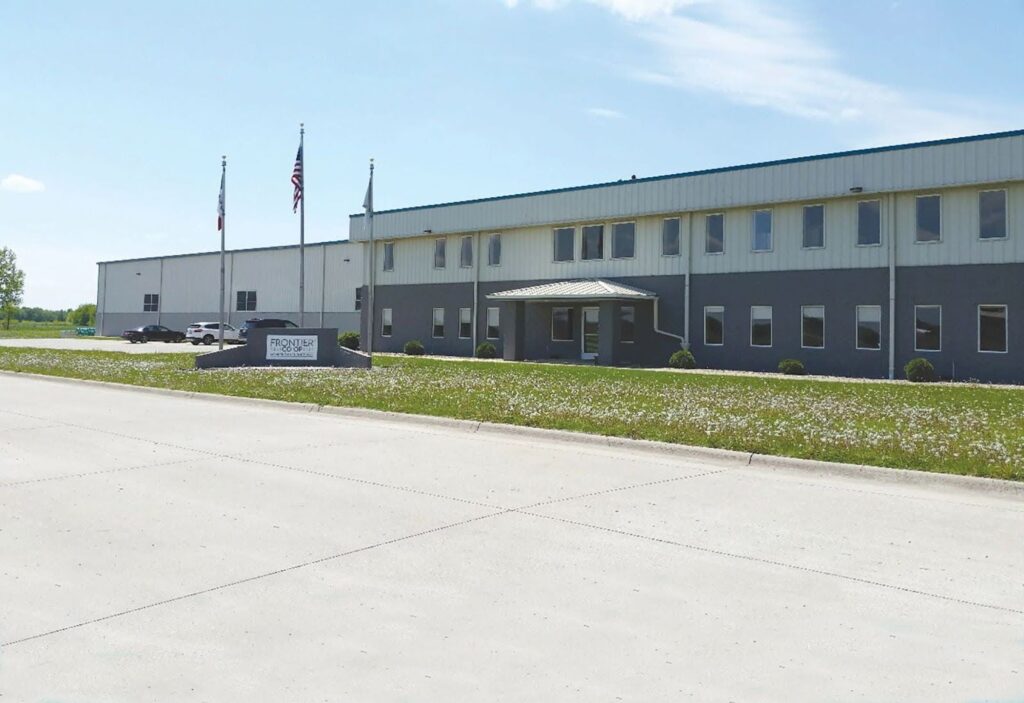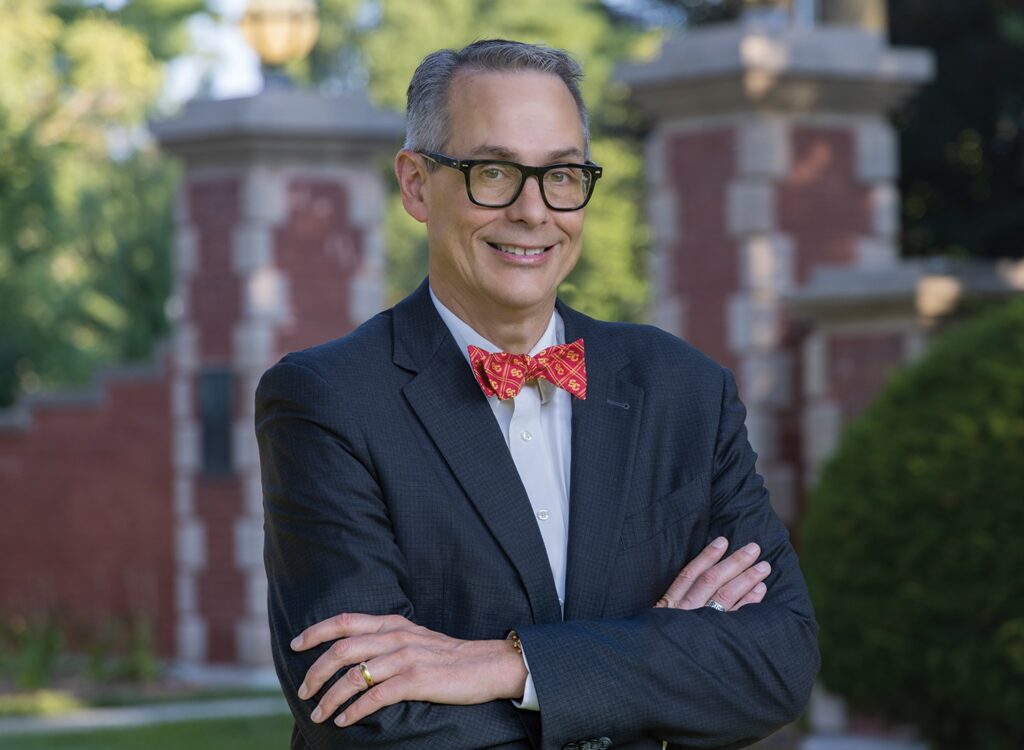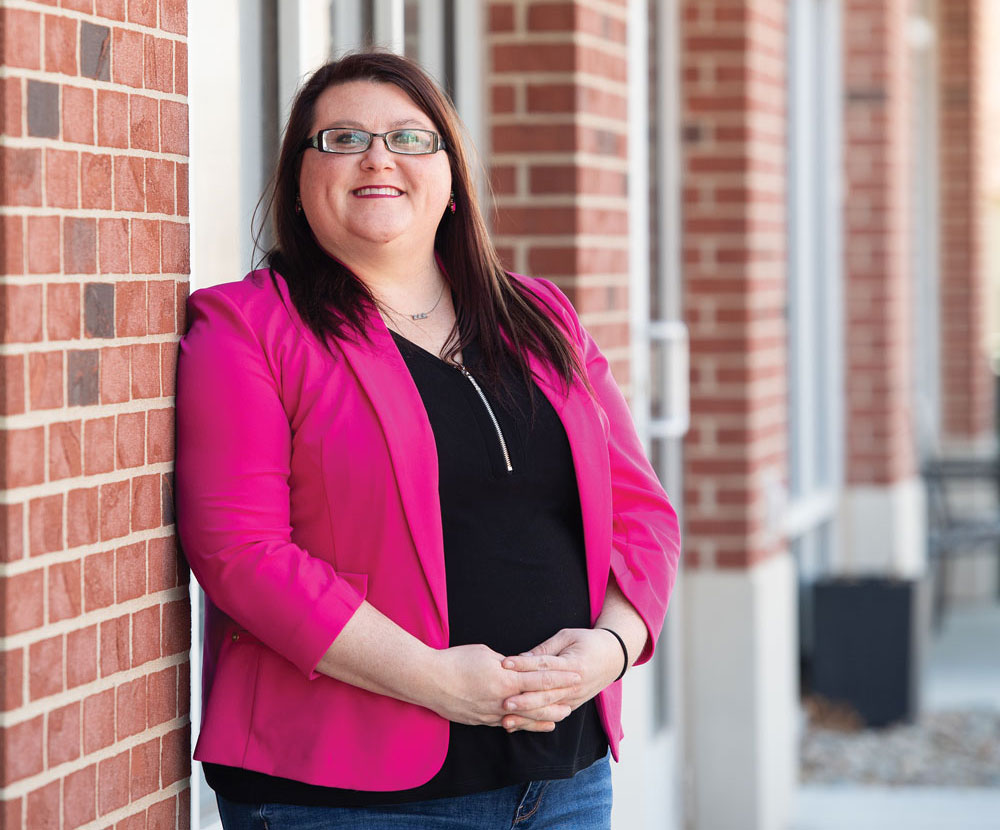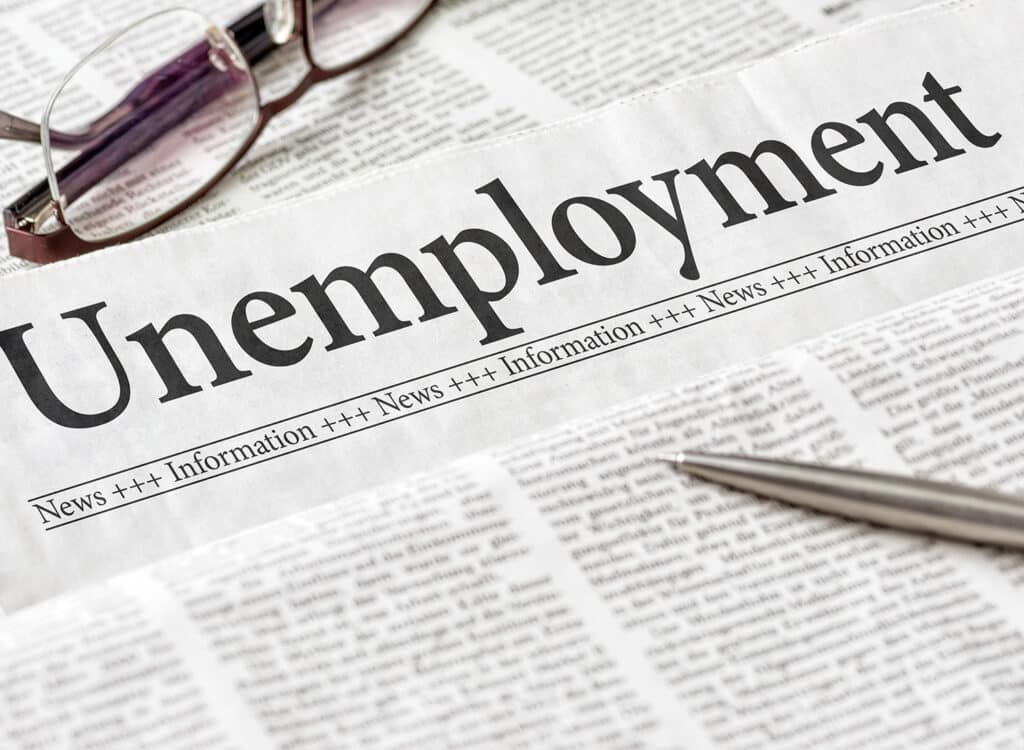2015 Economic Forecast
How will the economy impact your business in 2015 and beyond?

BUSINESS RECORD STAFF Jan 30, 2015 | 12:00 pm
11 min read time
2,558 wordsBusiness Record Insider, Economic DevelopmentIt’s going to be a good year.
But don’t look for the economy to lift off like a rocket. Instead, expect solid growth in the United States, especially if the economies of China, Greece and a few other key spots weather some trouble.
Central Iowa should continue to see a low unemployment rate, solid hiring, growth in commercial development, another bump in housing starts and an economic boost from a stimulus that didn’t even have to withstand Congress: lower gasoline prices.
That’s the word from three experts interviewed by the Business Record for their perspective on an economy that continues to chug along post-recession with steady, modest growth.
We checked in with Richard Swanson, president and CEO of the Federal Home Loan Bank of Des Moines; Tom Root, an associate professor in Drake University’s College of Business and Public Administration; and James Paulsen, chief investment strategist at Wells Capital Management.
What kind of year will it be?
A global economy benefiting from low energy costs should be set up for a solid year, though not a spectacular one, the economists said.
They expect strong hiring and more dips in unemployment. The national unemployment rate is likely to fall to the 5 percent range, with Iowa’s rate continuing to be even lower.
They predict a good year on Wall Street, with some thought there could be a minor correction on the way to a bigger run-up in 2016.
The uncertainty in global markets drives demand for U.S. debt, which in turn leads to a favorable lending climate. With interest rates for mortgages unlikely to rise significantly, at least until late in the year, there’s a good chance housing starts, and sales, will increase at least modestly. At the same time, federal changes on the regulatory scene could mean credit is more readily available to home buyers.
About the only thing that could shake the U.S. economy and cause a slowdown is trouble overseas, where some economies are still volatile. But Paulsen, for one, thinks the fall in oil prices and other factors could bring up to 1 percent or perhaps 1.5 percent growth in Europe.
In the United States, solid capital spending and other forces could mean a 3.5 to 4 percent increase in gross domestic product, the economists said.
Over the following pages, my colleague Joe Gardyasz and I have provided a primer to the 2015 economy, highlighting key points of emphasis from our interviews in order to help you better understand the business climate in 2015. Enjoy, and good luck in 2015.
Housing Outlook
The U.S. economic recovery has presented a paradox for potential home buyers and consumers alike. Despite record-low interest rates, banks have remained hesitant to lend, which has meant only moderate growth in home sales and the economy. However, growth in home lending strengthened noticeably in 2014 in the Midwest and should continue to see solid growth this year, says Richard Swanson, president and CEO of the Federal Home Loan Bank of Des Moines.
Although 2015 looks like it will be a year of favorable mortgage rates, the financial institutions served by the FHLB aren’t expecting to see any big increases in home building or first-time home buyer activity. “It will be more of a gradually improving trend,” Swanson said.
As a major source of mortgage funds for financial institutions throughout Iowa and four other Midwest states, FHLB Des Moines is a barometer of home lending and economic activity for the region.
The wholesale bank, which serves more than 1,100 member financial institutions, grew significantly in the past year, nearing a new all-time high of nearly $100 billion in assets in the fourth quarter. Advances to its core member institutions increased by nearly 20 percent to $13.4 billion in 2014.
The bank is also well into the process of merging with the smaller FHLB Seattle, which is expected to be completed on May 31.
Construction starts on single-family homes nationally rose by only 6 percent in 2014, according to a 2015 Economic Outlook report released in early December by Wells Fargo Securities.
That slow pace closely mirrors sluggish new-home sales, which have been held back by a weak job market, slow household formation and tight mortgage underwriting, according to the report.
In the past year, the volume of home purchases definitely picked up, but not nearly at the level that long-term trends suggest it should be, Swanson said. Constraints on credit availability are one of the big reasons behind that, he said.
“Even though interest rates are low, credit has not been nearly as available post-crisis,” Swanson said.
“Banks have been very wary of lending because of the complexity of new (mortgage) rules. And borrowers have had difficulty, even if a bank wants to lend, getting qualified under even more stringent credit standards. What people often call the credit box has been very constrained.”
Some developments in the past few weeks signal a potential loosening of mortgage credit availability down the road, however.
“What may have the biggest impact over the next two years is this loosening of credit standards for Fannie and Freddie,” Swanson said, referring to the announcement that Fannie Mae and Freddie Mac will now insure mortgages with down payments as low as 3 percent.
An additional factor that may help to boost credit availability is the new Republican majority in Congress, which may lead to some reduction in the banking regulations instituted by 2010’s Dodd-Frank Wall Street Reform and Consumer Protection Act, he said.
“So you’ve got those two factors working in the same direction right now,” Swanson said. “How much legislation will we see cutting back on regulations? I think there’s a good chance we’ll see some come out of Congress, but unless it’s pretty benign, Obama’s likely to veto it.”
The current economic turmoil overseas actually provides a positive short-term benefit to the Federal Home Loan Bank system and its members, Swanson noted.
“Our cost of funding is very directly related to global economics. And during a period like this where we already had very low interest rates in our country and there’s weakness or uncertainty in other economies, there tends to be a global flight to quality for bond investors to want U.S. debt,” he said.
“We, along with the other Federal Home Loan Banks, are collectively one of the top debt issuers in the world. Our cost of borrowing is really a direct reflection of that global demand. So this is a very favorable economic condition from the viewpoint of our cost of funds.”
global pressures
Uneasiness in Europe, China could dampen U.S. growth
Economists say the United States is a bit of an economic oasis in a world that is fighting through some financial difficulties, from Greece’s money troubles to deflation fears in Europe.
“We are the one country that might be accelerating a bit,” said Tom Root, an associate professor in Drake University’s College of Business and Public Administration.
“Everyone is slowing down,” Root said. “We have deflation in Europe. China is slowing down. That puts us in a precarious position. We are dependent on the rest of the world. “
Paulsen, the Wells Fargo economist, also has one eye focused across the sea. “Globally, at least, we come into the year worrying about weak global growth, deflation and the like,” he said. “I think it’s going to be a good year on Main Street, not only here but globally. U.S. growth is among the best of the recovery – it’s probably north of 3 percent.”
Global uncertainty isn’t bad for everyone.
“What’s going on globally raises a lot of questions and uncertainty going forward, but the short-term impact on the Federal Home Loan Bank is that it tends to push down the cost of our borrowing, and that’s good for our members,” said Swanson.
oil prices as a stimulus
Lower energy costs put cash in consumers’ pockets
The drop in gasoline prices is a stimulus not only in the United States, but around the globe, Root said. And while the Federal Reserve and others debate money policy, interest rates and other economic forces, the fall in gas prices gives families more discretionary income. “It’s something the governments don’t have to do,” Root said. “It came at the right time.” Gas prices probably won’t rise for sixth months to a year, he added.
For the first time, Saudi Arabia won’t be able to control supplies of oil because the United States and others are producing so much. Russia, which has suffered from the low oil prices, has not moved to limit production.
Paulsen expects a turnaround in Europe to begin in spring and summer, and perhaps 1 to 1.5 percent growth for the year in that region.
“By many metrics, we’re doing about as good (as we have) at any point in this recovery, yet we’re still dumping massive amounts of stimulus on the system,” Paulsen said. “We dropped the 10-year (Treasury note) yield by one-third this last year; we dropped energy costs by 50 percent. Those are massively stimulative events. I’m not sure we need that when the unemployment rate is already falling at a percent a year and we’re now close to full employment.”
interest rates
Heading up by end of year?
The bottom line: Interest rates are likely to remain low for a longer period of time than economists were predicting just six months ago. “Our expectation is that the Fed will hold short-term rates down for months ahead, well into 2015, given the recent global issues,” said Swanson. “We think before the end of the year we’ll see some upward movement.”
employment
National unemployment rate to fall further
Those unemployed for more than half a year should start finding work.
Root expects the national unemployment rate to fall closer to 5 percent.
“The hope is that the long-term unemployed, those out of work for more than six months, will be getting back to work. That will be a real sign of health,” he said.
Paulsen said he expects national unemployment to drop below 5 percent by the end of the year, with job numbers on the rise, and lending rates improving. “We are now close to full employment,” he said.
GDP, capital spending
Gross domestic product should rise more than 3.5 percent
With retirement accounts and home values recovering from the recession, the stock market back to higher levels and new wealth being amassed, the U.S. gross domestic product should rise 3.5 to 3.7 percent, Root said. “That means spending should increase,” he said. “But people are still a bit nervous. Global forces could limit spending.”
“I think we may be pushing 3.5 to 4 percent real GDP growth in 2015,” Paulsen said. “More importantly, it’s just broader than it’s ever been before – it’s firing on all cylinders.”
“Cash flow-to-GDP has been at record highs during this recovery, so there is a boatload of possibility if you get corporations to spend some of their free cash flow, because there’s just so much of it. We are very close to an 80 percent factory utilization rate, and when you break 80 percent, capital spending starts to lead the economy. So that could happen fairly soon.”
“It could be that 2015 is the first year where we see growth everywhere at the same time, and that could make a big difference for capital spending. I do think that could become a more obvious force for growth this year,” Paulsen added.
Don’t expect record growth, though.
“During this recovery, our working population has only grown by one-half to 1 percent a year, which means we can’t achieve the growth rates we want to achieve,” Paulsen said.
Still, “I think we’re in the middle of the longest recovery in U.S. history – over 10 years. It has been slow, steady growth. I’m not sure it’s been disappointing. It’s just been different. I think we’re going to grow in that 3 percent area for the rest of this recovery, and I think it’s going to feel pretty good,” Paulsen said.
possible threats
Troubles in Europe, Japan could stress global markets
Can anything derail what looks like a solid growth scenario?
“I’d say the biggest thing I’m concerned about is this deflationary mindset in the United States – which by this summer might be more worried about being behind the curve (on dealing with inflation). In a short period of time, that creates a lot of volatility,” Paulsen said. “Our biggest risk is that (interest) rates go up a lot more than people think, and they aren’t ready for that. Or that the dollar keeps climbing and Europe and Japan keep dying and the policies they’ve employed do no good at all. That would intensify the fear of a global collapse. And with the Fed out of bullets, it could get ugly in a hurry.”
stock market
Economist sees 2015 as ‘adjustment year’
What does Paulsen predict for the stock market?
“My feeling is we’re facing an adjustment year,” Paulsen said. “I also think the bull market is several years away from ending.”
So what could hold the market back in 2015?
“We are almost too good on Main Street, and that may give Wall Street some trouble,” Paulsen said, “Both Main Street and Wall Street can succeed, but they rarely do it at the same time. Wall Street has been established by the fear of the second coming of the Great Depression. But we’ve had five-plus years of continuous growth, we’re at almost full employment and confidence is at a seven-year high.
Look at 2015 as a bit of a breather, before the next big run comes in 2016, Paulsen predicted.
“(2015) is a year where we’re going to refresh the bull (market),” Paulsen said. “We’re going to gut-check sentiment. We’re going to bring down valuations, and we’re going to more appropriately align interest rates with the (economic) cycle, all of which could be very good for setting us up for a run in 2016.”
minimum wage
Odds against an increase this year
The minimum wage in Iowa remains lower than in most of the surrounding states. Root, for one, doesn’t expect action to change that, even if it is warranted.
“It’s such a political football,” he said. “It’s hard to support a family on it. But we’re less likely to see debate on it (in Congress) with the GOP in charge.”
hiring
Economists expect strong hiring this year
A number of hiring agencies have predicted that this will be a good year for job hunters, especially those in technical fields. The economists predicted that companies will fill new or restored positions in addition to replacing workers who have left.
“Hiring rates are still a little lower than 2004-07, but I think we are coming back,” Root said. “Firms are adding some of the luxury employees.”
downtown in driver’s seat
Commercial real estate expected to make strong run
Commercial real estate observers expect a continued surge in downtown development, Paulsen said.
“The best thing for downtown development is just consumer confidence and the low prices at the pump,” he said. “I don’t think we are going to boom, but certainly we will have growth that feels pretty good.”
That confidence could show up in retail, too. Sales tax receipts in Polk County rose to $435.2 million in 2014 from $416.2 million the year before.









